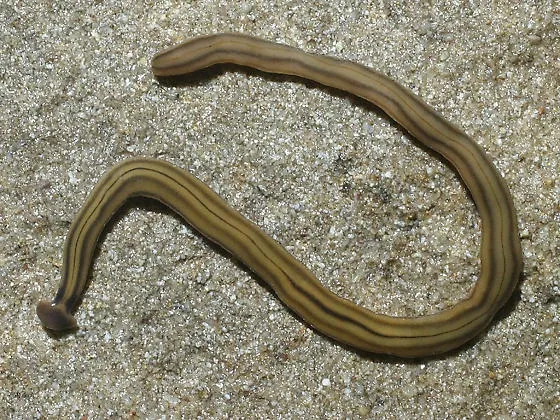Many years ago, back in 2007 I wrote a blog about the Hammerhead Worm Bipalium species. This pest seems to have reared its unusual head again. Most of the time people don't even see it, but it's there lurking in the garden.
The Bipalium species is a “hammerhead worm” or “broadhead planarians”. It is usually found in areas with heat, high humidity and with a lot of rain. They are usually seen in cool, dark, moist areas. It favors a moist habitat and is usually found near outdoor water faucets, or where the soil remains wet. They are carnivores and can be cannibalistic. They usually move and feed at night.
They originate from Southeast Asia. They have been found commonly in American greenhouses since 1901. The species was discovered in 1878 in the greenhouses of Kew Gardens near London, hence its scientific name, Bipalium kewense. More and more people are finding the Bipalium adventitium the past few years, due to warmer temperatures, thus allowing it to reproduce throughout the U.S.
They belong to a very primitive class of animals. This land planarian is flat, slender and brown, with longitudinal stripes; it can be large, and over a foot in length. The head is shovel-shaped (wider than body) and there are numerous minute eyes along its edge.

There are four different species of these Bipalium flatworm currently found in the US. Three eat only earthworms; one eats snails and slugs. Bipalium kewense is found across the southern states and may get over 10 inches. It has five dark stripes along the back including a thin middle stripe. Bipalium adventitium is found across the northern states, and is 4 -12 inches long. It has one narrow dark stripe on the back. Bipalium vagum is the mollusk eater now found in the southeastern US. It has three thick dark stripes, a dark neck collar, and two dark head spots.
Hammerhead worms have a sticky goo on their skin and secret a neurotoxin that is toxic and used to paralyze it's prey before they eat them. This neurotoxin called tetrodotoxin. It does have the potential to harm people and animals, especially if digested. Use gloves if you see them and want to handle them.
Their bodies are very easily damaged. The flat worms will reproduce by division if cut, swashed or broken. Reproduction is principally by fragmentation at the posterior end. Lateral margins pinch in about 1 cm from the tail tip. Severance occurs when the posterior fragment adheres to the substrate and the parent worm pulls away. The posterior fragment is motile immediately, and within seven to 10 days a lightly pigmented head begins to form.
They have been reported to be a pest in earthworm beds. There are no known forms of pest management. They are not known for spreading diseases. One way to deal with them, is to take them out of your garden using gloves and put them in a container and pour some salt on them.

